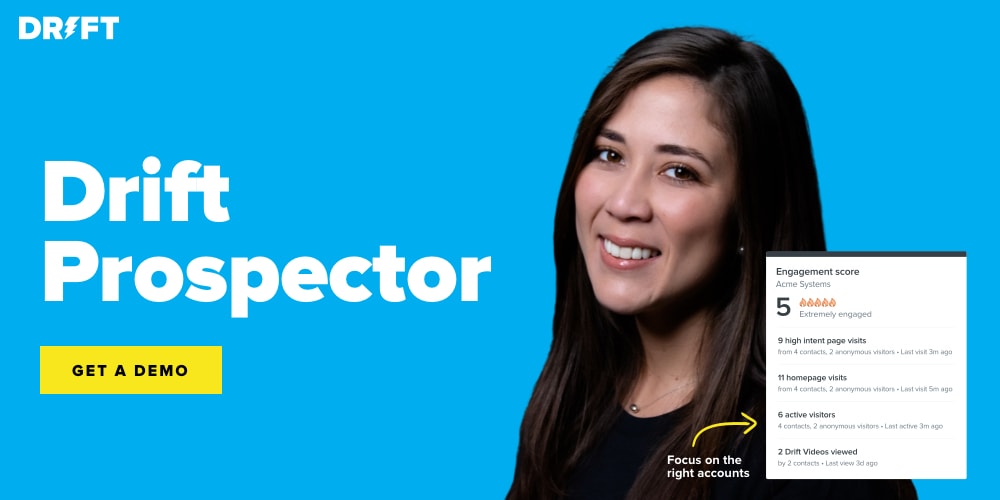
Training and scaling a team of SDRs is always a challenge. You need to upskill them fast to make the most of the short time they will stay in that role.
Before I go any further, I just have to say it. SDRs ask a lot of questions. All day long.
I remember when I was an SDR, my boss told me, “Julianne, you can ask me questions at 11:00 AM and again at 3:00 PM, otherwise you won’t get any work done.”
I can say it because I was one. SDRs are needy. It’s okay, they have a lot to learn. And a curious SDR? Well to me, that’s the mark of a good SDR.
But when you add in remote work – especially sudden, unintentional remote work – and things get more complicated.
Their needs for information, decision-making, and advice don’t go away when they’re out of the office.
So how can you give new SDRs attention when you’re not in the same room? Or when you’ve never been in the same room?
That’s what I’m covering today → specific actions you can take to train and scale your team of SDRs in a way that serves the org and puts them on the right career path.
The Challenges of Onboarding SDRs Remotely
If you’ve ever thought to yourself that SDRs don’t hold their position for long, you’re right. The average length that an SDR stays in that role is only 16 months, with plenty of SDRs moving on to something else at around month 10.
When we onboard SDRs, we already have a lot of things working against us. The short average tenure of the role means that we need to maximize every month any employee is working as an SDR.
The other issue is the lack of experience. SDRs may be new to sales. They might have never held an SDR position before. They could be new to your industry, and not understand your target customers’ pain points and needs.
My first day at Drift was on March 20th, right when Covid-19 hit the U.S. On top of adjusting to the new normal, I started a new role, and to this day I haven’t met anyone from my team in person 🤯
Many of our SDRs are in the same boat.
And yet, I was still tasked with scaling the SDR team with the same level of efficiency that I would have expected had life looked like…the old normal.
5 Keys for Scaling an SDR Team
Despite these challenges, things are going really well.
We’ve put some foundational building blocks in place that take the friction out of this role and turn the short tenure into a positive.
1. Align with Your Sales Counterparts
Even at the office, the old model for filling pipelines doesn’t serve SDRs or AEs very well.
With the standard model that most companies follow, a single SDR fills the pipeline of two AEs. This means that when an SDR is ready to move onto another role, the AEs are somewhere on the spectrum between bummed and frazzled.
Their pipeline is empty until they find the time to fill it themselves or until another SDR is hired and onboarded.
We’ve put a new model in place. It looks more like a pod.
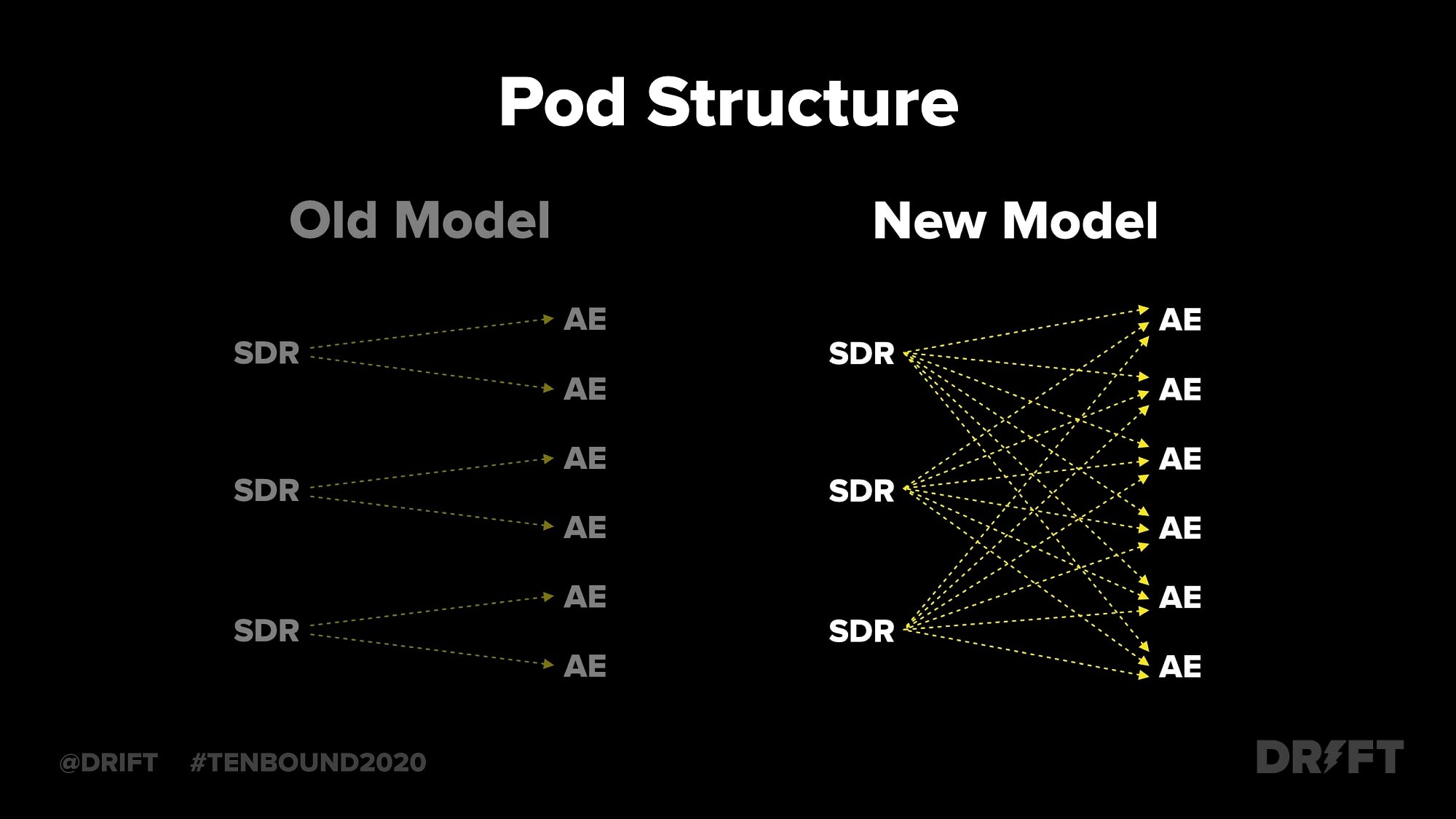
Now, SDRs support multiple AEs, and AEs are also supported by multiple SDRs.
This has a couple important benefits: SDRs can advance in their careers without catching any flack, and AEs get a regular deal flow no matter what’s happening with hiring.
When it comes to aligning SDRs and AEs, better weekly huddles can help too.
After analyzing what was working, we now recommend that all SDR and AE pairs use a spreadsheet to keep track of their activity, and how it overlaps.
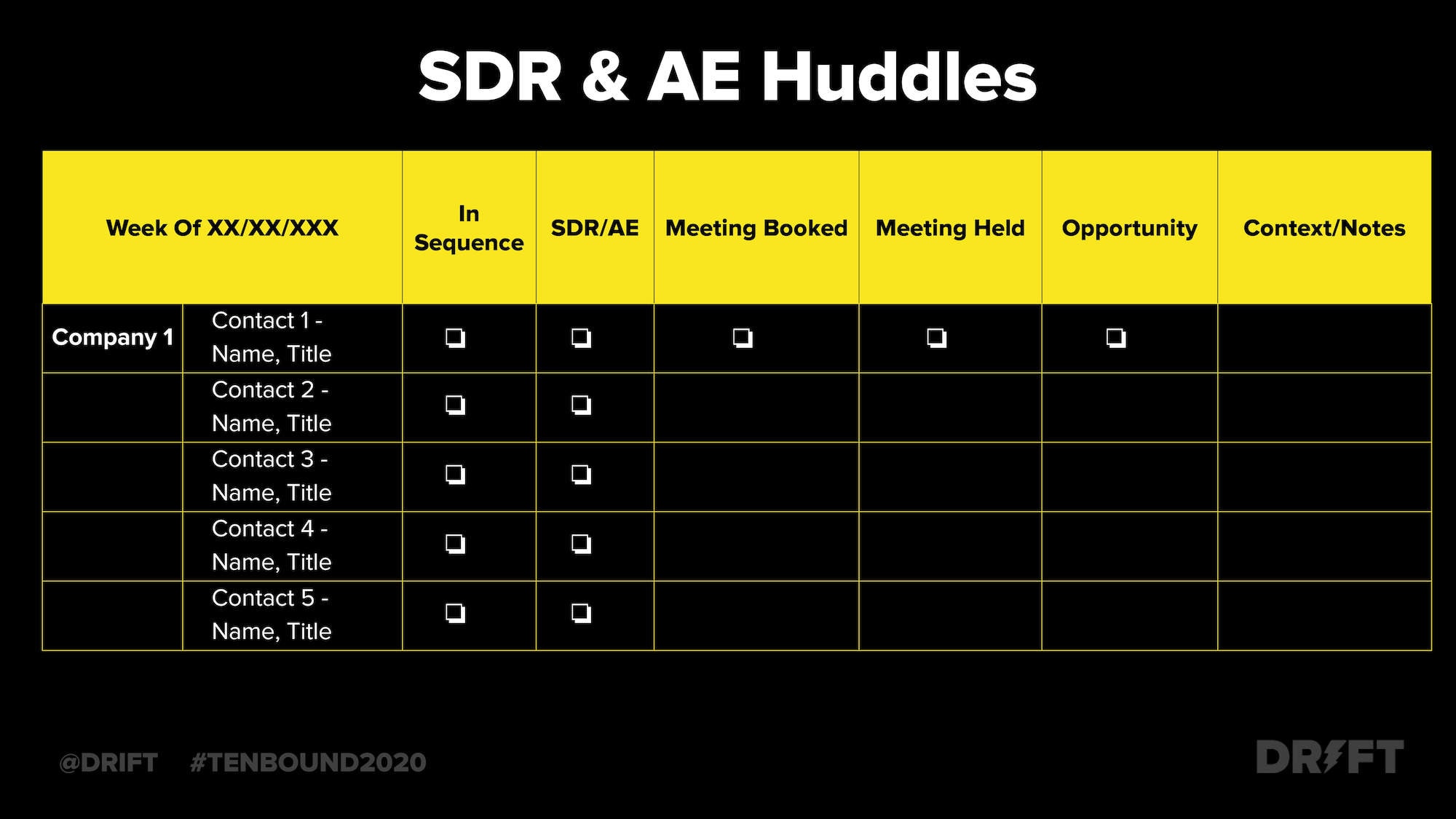
SDRs can focus on volume, especially with cold calls, and AEs can layer on the personalization with outreach on other channels like email and social.
2. Supercharge Your Multichannel Strategy
Account-based prospecting continues to gain popularity for good reason. It can reduce time wasted on unproductive prospecting by 50%.
It’s not possible to do multichannel prospecting really well – if you’re not also prioritizing your accounts. With Drift Prospector (here, now!), SDRs can quickly prioritize their daily activities using data, which is even more important since they don’t have years of experience on their side.
There’s just not enough time ⏰
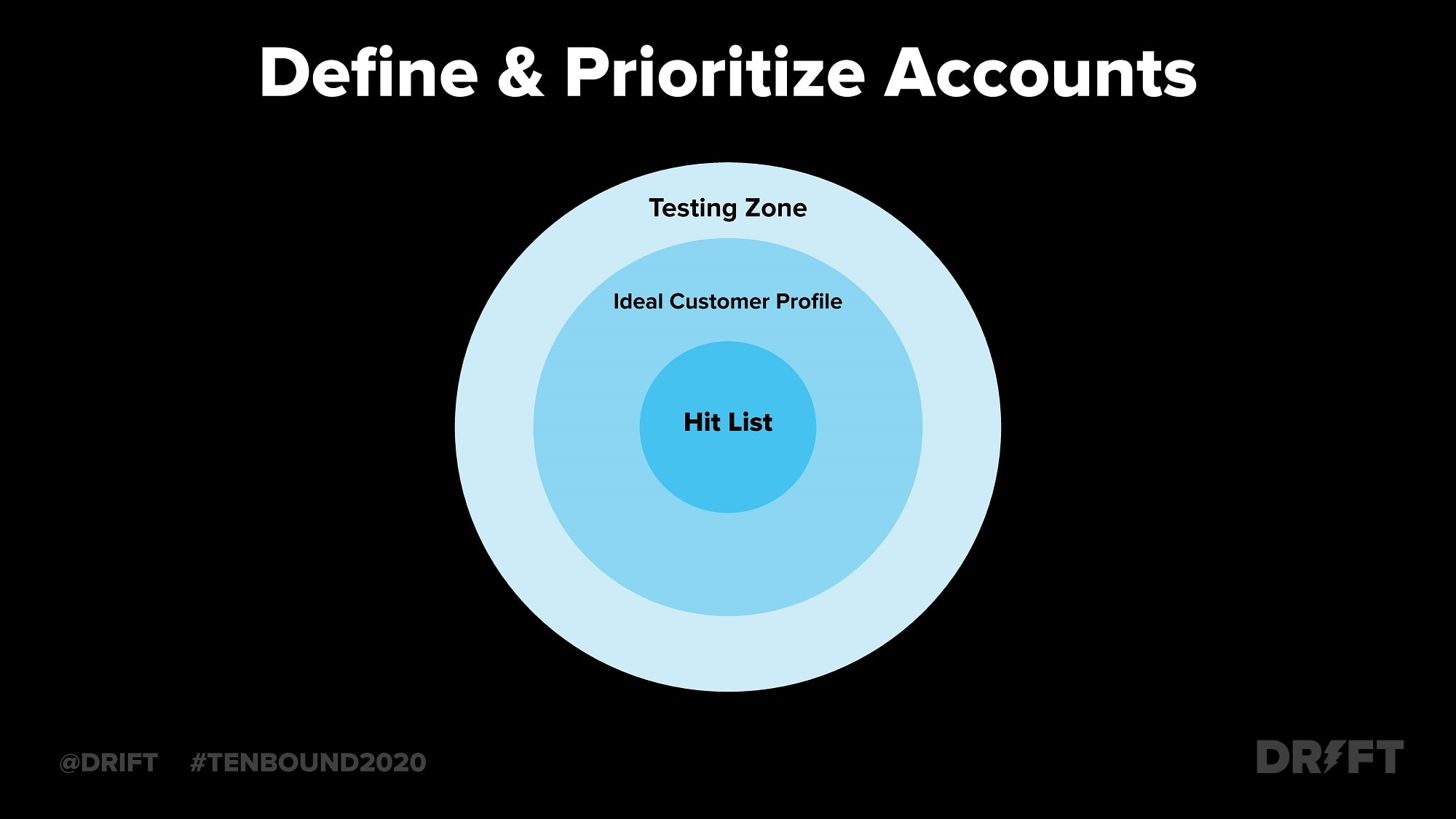
What we recommend is creating different tiers that help you choose the channels you’ll focus on, as well as the level of personalization.
Your Tier 1 accounts not only fit your ideal customer profile (ICP), but are also known to be hot or warm. Maybe they’re nearing the end of a contract with a competitor. Maybe they’ve downloaded three lead magnets in the last month.
Tier 2 accounts fit your ICP but don’t offer data on engagement with your brand, and Tier 3 accounts are the new variations of your ICP that you’re testing out.
Here’s how to approach these different groups:
- Tier 1 – Hit List: highly manual and personalized outreach across all channels
- Tier 2 – Ideal Customer Profile: personalized emails and phone calls
- Tier 3 – Testing Zone: personalization at scale by persona
For Tier 3 and Tier 2, you’ll still want to be personalizing emails and phone calls based on the persona. You just might add some account-level personalization at Tier 2.
And at Tier 1, you need to hyper-personalize for the account and also add on social media engagement and maybe direct mail too.
3. Manage Your Metrics
Knowing your funnel numbers helps you find out exactly why reps aren’t hitting individual goals when that inevitably happens.
That’s why you want to evaluate your SDR conversion funnel for the entire team (but also measure each rep individually).
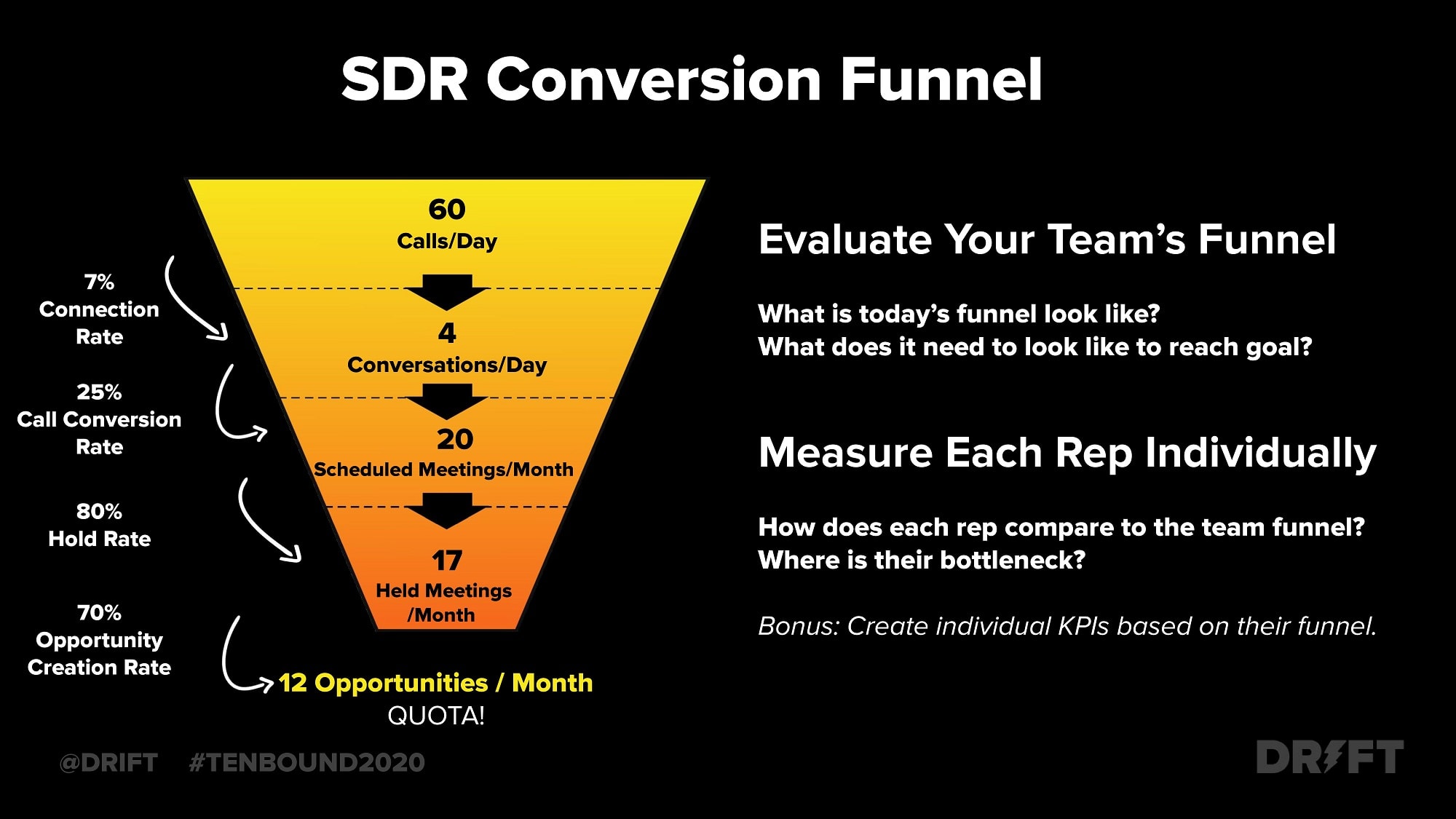
You should intimately know your numbers for the number of outbound calls, the number of conversations, the number of scheduled meetings, and the number of meetings that actually occurred.
Tracking this lets you calculate your connection rate, call conversion rate, hold rate, and opportunity creation rate.
Measure all of these team-wide so you can get accurate numbers, then set individual KPIs.
When any rep doesn’t hit their quota, you don’t have to guess. You can look at their individual funnel metrics to find what phase they need to improve in order to deliver more opportunities.
4. Develop Your Reps
We created an ongoing training schedule for all SDRs. Every month, we set a new theme based on a gap or issue.
In the example below, I had identified a gap in our call conversion – the ratio of conversations to scheduled meetings – so we dug into the four main components that would help drive this metric. We chose to cover personalizing your intro, asking value-driving questions, objection handling, and closing. Each week we focus on one of those areas.
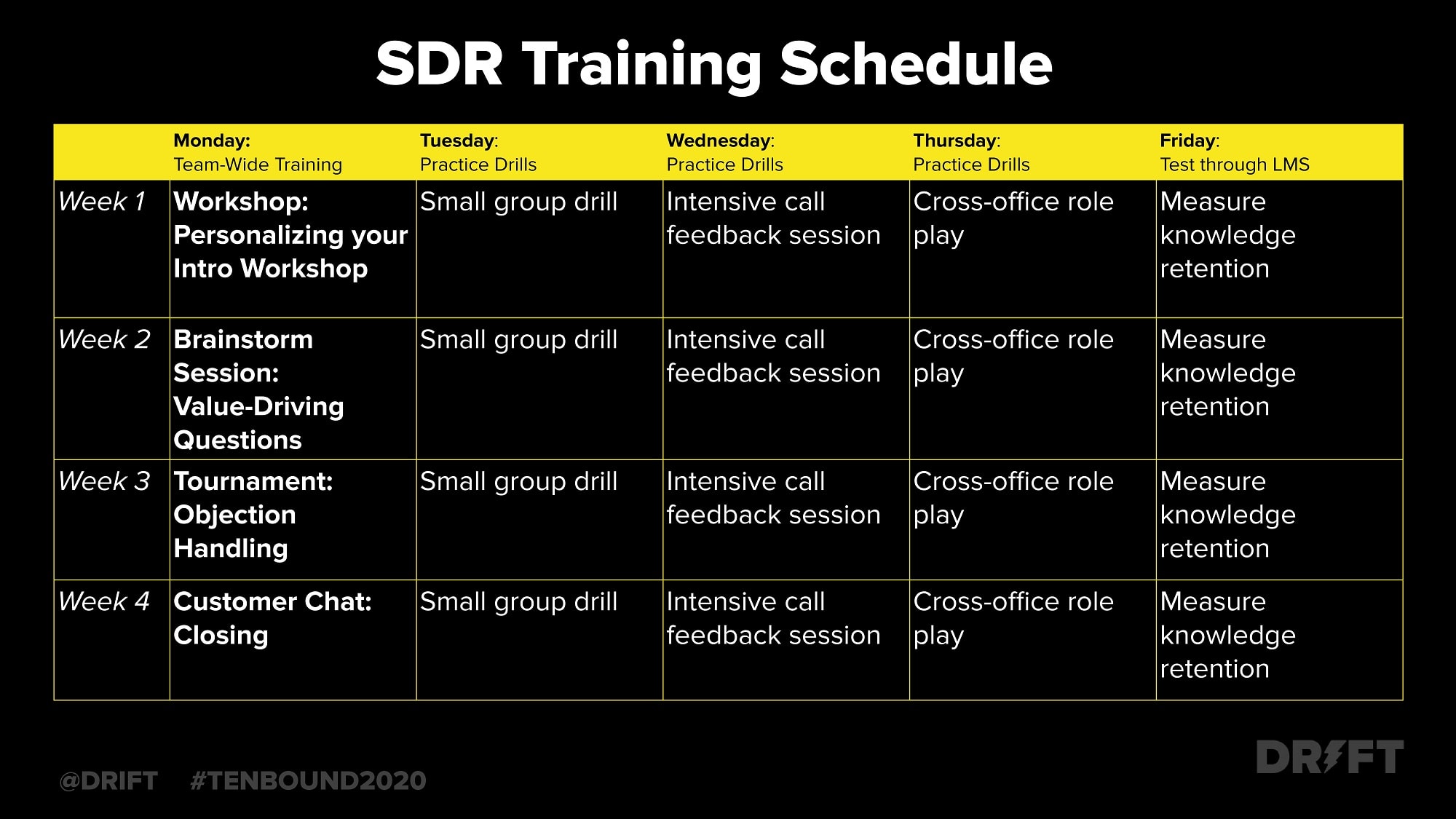
Another way to develop your reps is to identify the different phases of an SDR’s role, so you can work with the low tenure instead of against it.
This helps us develop SDRs based on where they’re at in their careers.
After speaking with our SDRs and AEs, we were able to break out the SDR lifecycle into four unique phases.
- New hire, month 0 – 4
- SDR, month 5 – 6
- Senior SDR, month 9 – 12
- Pre-promotion SDR, month 12 – 24
Most importantly, we’ve set goals and expectations for these phases to add some clarity around what SDRs should be focused on as well as provide them with a green light to start scouting other roles when the time is right.
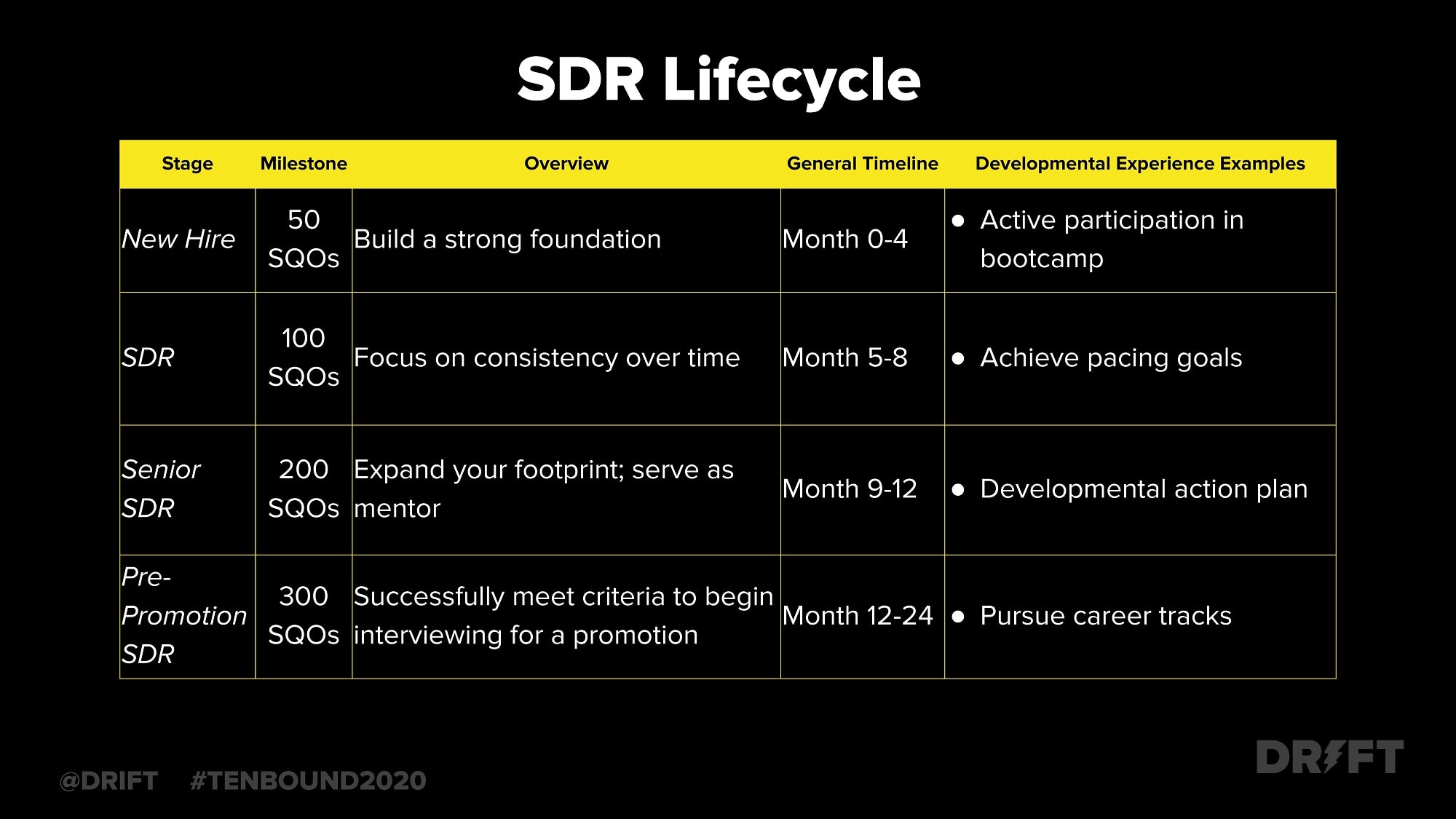
Here are some more details on what we want to see during these phases.
New hire, month 0 – 4:
- Active participation in boot camp
- Script & value for personas
- Sequence strategy
SDR, month 5 – 6
- Consistently achieve KPIs
- Achieve pacing goals
- Identify areas of improvement
- Building relationships with AEs
Senior SDR, month 9 – 12
- Lead SDR training
- Serve as an area captain
- Mentor your replacement
- Developmental action plan
Pre-promotion SDR, month 12 – 24
- Serve as a peer-leader
- Pursue career tracks
- Mentor your replacement
- Supporting leadership projects
Your boot camp and SDR lifecycle phases might look different, but they should be systematized and documented.
5. Tap into Sources of Motivation
Isn’t it odd that we saved motivation for last?
This is by design 😎
Motivation-boosters are something that stressed-out sales leaders might turn to prematurely. But foundational problems can’t be fixed with fun competitions.
Only when your foundation is right, find ways to ignite different sources of motivation on a daily, weekly, monthly, and quarterly basis.
We’ve found that the top sources of motivation are:
- Professional development
- Cohesiveness
- Competition
- Recognition
- Money
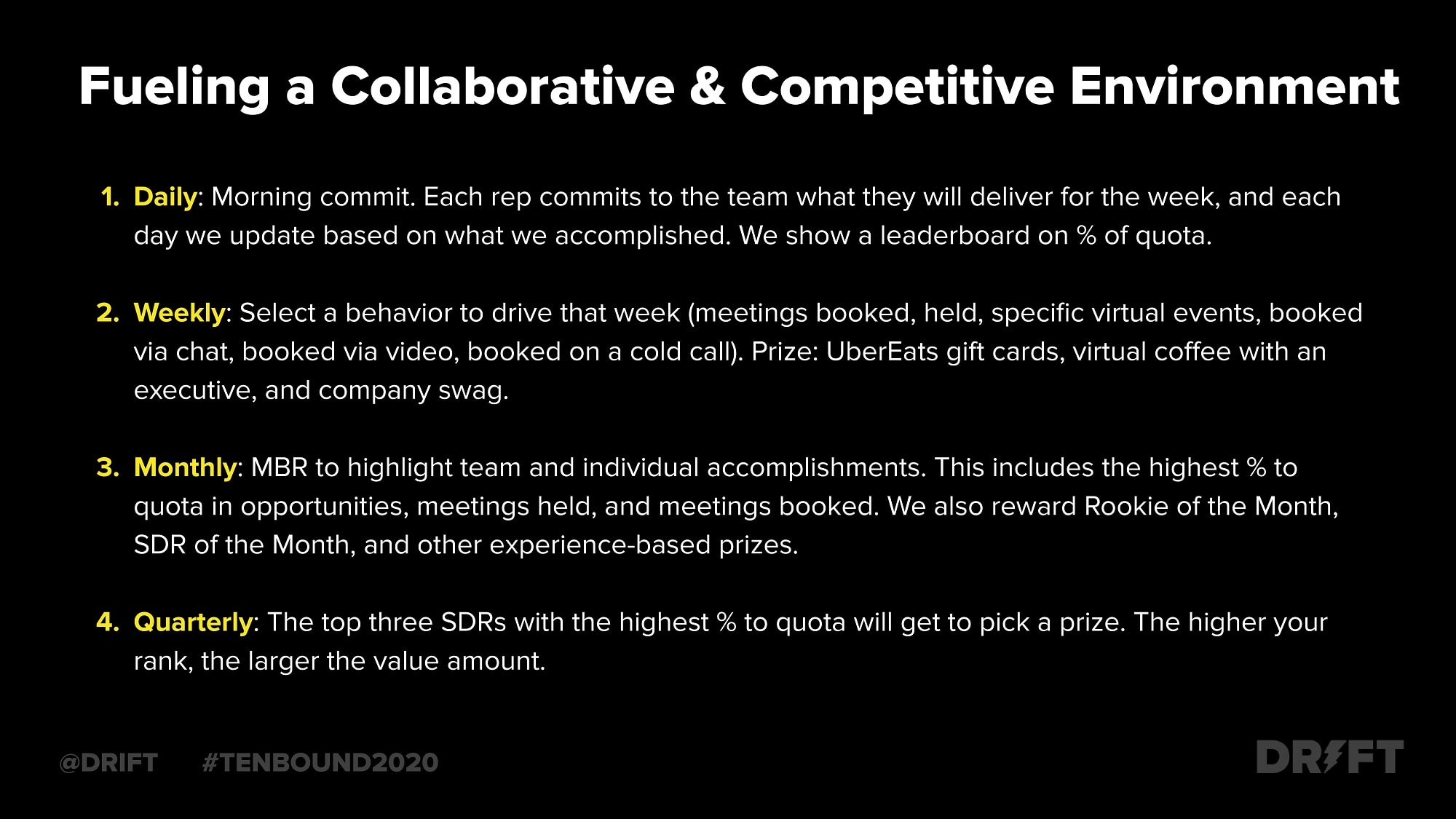
Some of the ways that we regularly utilize these types of motivation are leaderboards, accomplishment shoutouts during meetings, and contests around certain behaviors (such as meetings held).
The ways that you motivate your team can and should be simple.
Just make sure that there are systems in place for SDRs to quickly contribute meaningful work. That way, any contests will be like the cherry on top instead of the heavy lifter.
At times, scaling an SDR team remotely has been challenging, but it has given us the chance to work on our systems and fine-tune them.




